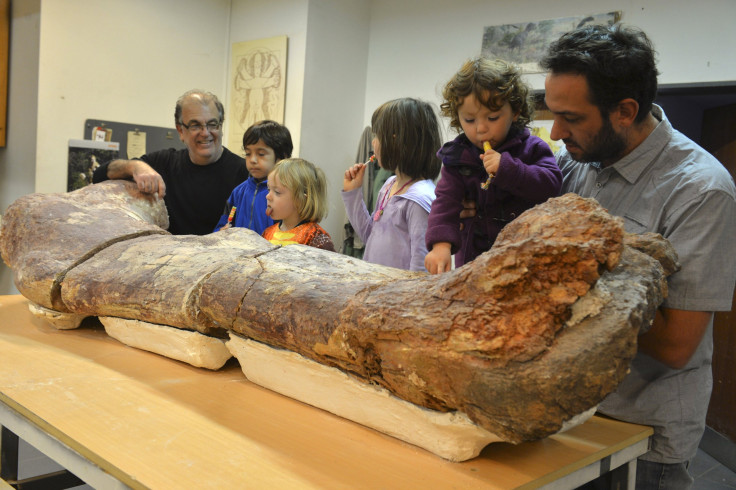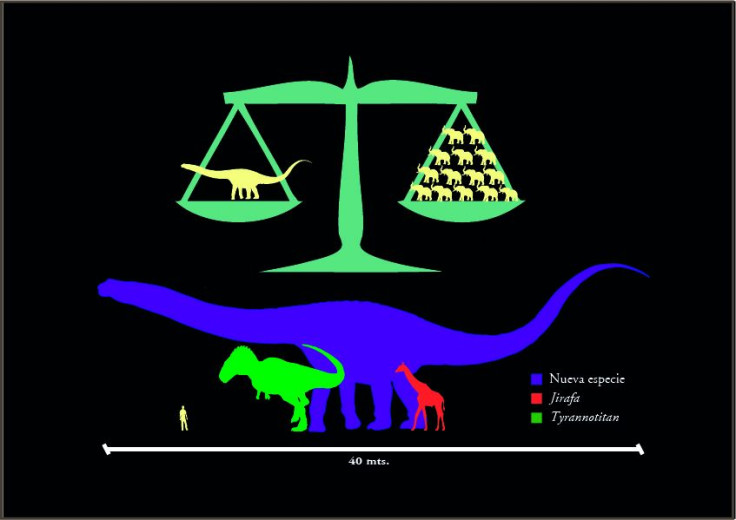How Big Is That Titanosaur They Found In Argentina? Compare It With These Things

Paleontologists in Argentina have uncovered what they call the biggest dinosaur species ever found. They found 150 fossils of a new species of titanosaur that was 20 meters (65 feet) tall and 40 meters (131 feet) long and weighs 170,000 lbs. (77 metric tons).
Team leader José Luis Carballido of Argentina’s Museo Paleontologico Egidio Feruglio says it’s like “two semi-trucks with trailers, one after another, and the weight of 14 elephants combined.”
They don't call it a titanosaur for nothing. He and his team offered this graphic to give you an idea of how big this discovery is (pun intended).

Here are few more comparisons to give you an idea of just how big these creatures were.
It's head would reach the top of this bridge:
You'd have to bring in the fire department to say hi:
And it weighs a couple more tons than one of these, which you may be familiar with:

In other words, you’d need about 1 million pounds of solid propellant and another half a million gallons of liquid oxygen and hydrogen to put one of these newly discovered dinosaurs into orbit.
If two of these new dinosaurs stood tail to head, they would span a full New York City block. So about 100 of these would go the length of Central Park.

Finally, we can compare it with the gigantic Argentinosaurus, which was also found in Argentina by a rancher. This new dinosaur is estimated to be on average 7 tons heavier than Argentinosaurus.
© Copyright IBTimes 2024. All rights reserved.





















